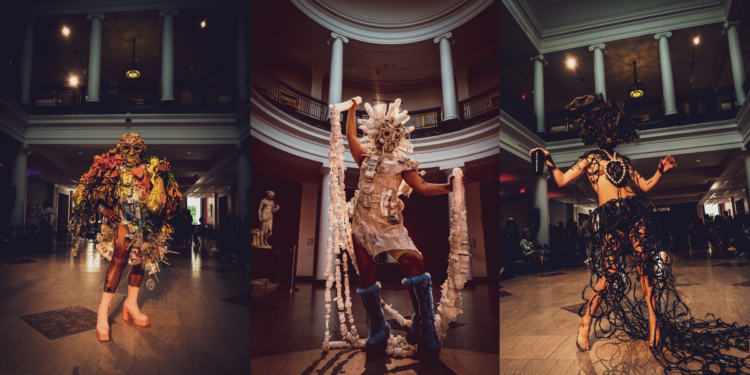Creating Your Artist Resume

Resume Basics: An artist’s resume is a listing of your professional experiences, achievements and credentials, organized into categories for easy scanning by the reader. A resume lists the facts that place you in your discipline and reflects where you have already received support.
Length: A resume can be from 1-3 pages depending on your experience and who will receive it.
Best Practices:
- Maintain a list of everything you have done in your career (a Curriculum Vitae or C.V.). It may not be the document you distribute, but it will reflect your entire professional history, so it’s an important document to keep.
- Unlike a C.V., your resume is a fluid document that can and should be tailored for a particular opportunity. You may also have different kinds of resumes: one will be shaped for exhibition/performance/publication opportunities, while another may be used to apply for jobs or freelance situations, or to stress your activities as an educator, producer, curator or critic.
- As you accumulate professional experiences, begin to eliminate lesser listings. Choose only the most important and title the category “selected.” This alerts the reader to the fact that you have done more than what’s listed.
- Save your creativity for your art. Keep the format of your resume clean and neat, so it is easy to read. You want to be sure all the information in your resume is up-to-date, accurate, and free of grammatical and spelling errors.
- Save a version as a PDF file to preserve the formatting. The PDF version can be attached to emails and included as a downloadable, print-ready document from your website.
What to include in your resume:
- Contact Information: This includes your name, mailing address, phone number, email address and website. If appropriate, also include your studio address and phone number.
- Short Bio: This can be as simple as the year and place of your birth and where you live and work now. Other information is optional.
- Achievements: List the most recent events first and work backward in chronological order. Include the year, exhibition/performance/publication title, sponsor/producer (gallery, publisher, museum or organization), city and state.
- Exhibitions (for visual artists): If you have had four or more one-person exhibitions, create two categories: SOLO EXHIBITIONS and GROUP EXHIBITIONS. If you have had mostly two-person shows, the category could be SOLO & TWO-PERSON EXHIBITIONS. If you have had fewer than four one-person exhibitions, use one category, EXHIBITIONS to cover both group and one-person shows. Highlight the one-person exhibitions with an asterisk (*). Consider including the curator’s name.
- Collections (for visual artists): List corporate collections, institutions and well-known individuals who have collected your work. Do not list works owned by friends and relatives.
- Performances/productions (for performing and visual artists): You may want to include any other featured collaborators on the piece.
- Performances/productions (for playwrights): Indicate if your play was given a reading or a production. Also indicate whether your play is a one-act, full-length or musical.
- Publications (for literary artists): Include book title, publisher and year of publication. You may wish to make separate distinctions between chapter books, anthologies and journals.
- Readings (for literary artists): List the title of the work presented and the location.
- Recordings (for musicians): List all recordings of your work. Include disk title, work title (if you are not the only artist on the disk), record label, catalog number, year released.
- Repertoire (for dancers and musicians): List works you perform. Include title, choreographer or composer. If you perform on a special instrument, include it here.
- Works completed and in production (for filmmakers and new media): List your work that is both completed and in production. You can categorize by your role (director, writer, etc.) or the type of work (TV, feature, documentary, etc.).
- Screenings & Festivals (for filmmakers and new media): List the screenings and festivals. Include festival name, location and year.
- Commissions/public art projects: List the title of the commissioned work or public project, date, site and sponsor/producer.
- Awards and Honors: List recent awards first, working backward in chronological order. Include project grants, prizes won in competition, artist-in-residence programs and fellowships.
- Related professional work: List work that relates to your profession, such as teaching positions, lectures given, curatorial projects, films, adaptations, installations or recordings on which you have assisted/performed, etc.
- Bibliography: List all publications in which you have been mentioned or reviewed, and any articles that you have written related to art. Creating a bibliography with the correct information and punctuation is a complex science. When in doubt, refer to The Chicago Manual of Style.
- Education: If you are a recent graduate, education should be your first or second category. If you are a mid-career artist, it should be your last. List education credits in the following order: any degree you are currently a candidate for; graduate degrees earned; undergraduate degrees earned; other institutions of higher education and notable artists you’ve studied with (musicians and performers).
Creative Capital hosts professional development workshops to help artists learn skills such as proposal writing, marketing, and tax skills to help artists complete successful projects from inception to completion. Check our calendar for upcoming workshops!
